1. Temperature development for various installations
Unfortunately, I also have to destroy the illusion of a really completely passively cooled card at the beginning, because both cards in the completely open structure just worked with hangings and strangles. As soon as you install them somewhere – and the case is as big and smashed – they will eventually get out.
Although no other heat sources such as a CPU caused any additional problems in the test setup and I also used the nearest side wall or even the back wall had been left open as far as possible, both cards have reached their limits.
While the Palit GTX 1050 Ti KalmX 4GB simmered at least with an almost inactive boost, the XFX RX460 went completely out several times with a black and white checkerboard pattern. Not even the expected safeguards were in place. At just under 93°C, it's just the end.
That is why I limited myself to a total of three scenarios for the long-term test – after all, the measurements were always carried out for a full hour – for the later thermography analyses and in the furnace aufnau as well as in the closed housing with a fan (overpressure) or in the closed housing. two fans (underpressure). For the temperature comparisons, however, I compare all four results.
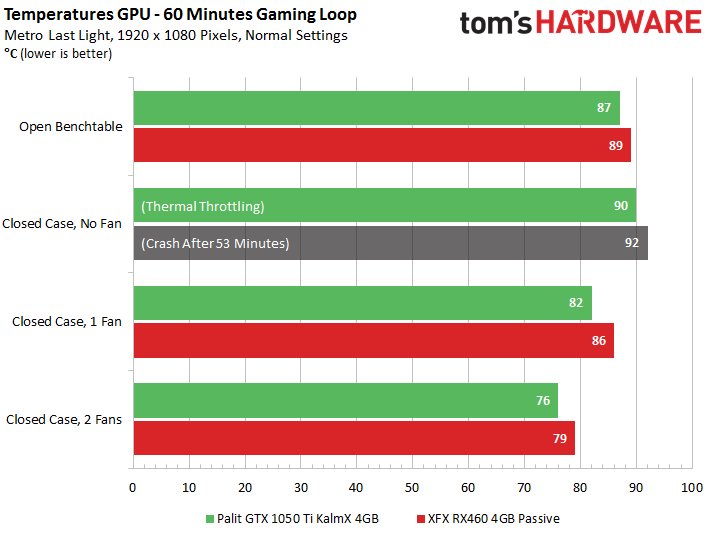
We can clearly see that the much smaller cooler of the XFX card is falling behind and requires at least one housing fan. A similar picture emerges for the voltage converters: The MOSFETs of the Palit card have to handle more load on a point-by-point basis due to the lack of a third phase, but benefit noticeably from the thermal guide pads used.
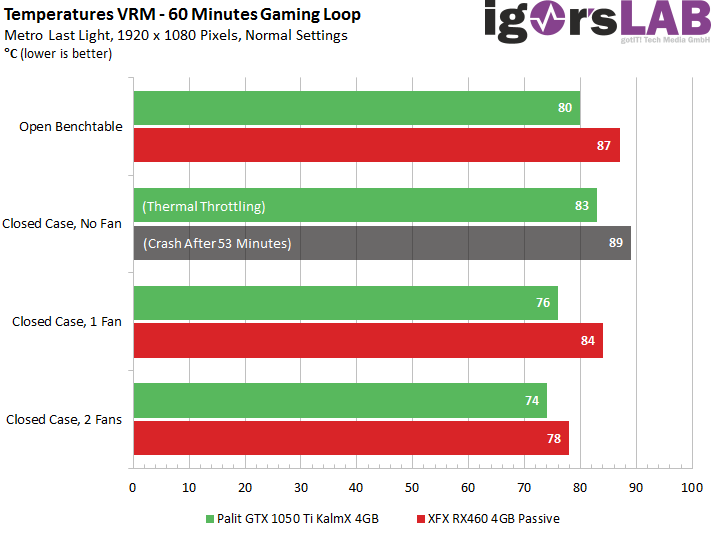
As I had already indicated, the Micron memory on the Palit card makes the much worse figure, despite the actually nominally better cooler. But the memory modules are excluded from the cooling concept for both cards, so that the image reverses very clearly here for the first time.
As long as you don't use two fans at once, the memory is even constantly above the 85°C, which the manufacturer has specified as the maximum value, which puts the actually good measurement results for this card into perspective. This is really not suitable for the long term.
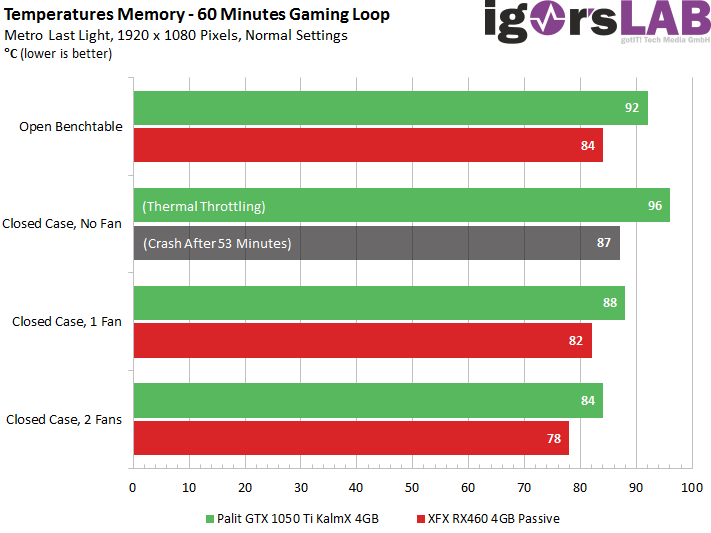
2. Thermography images of our IR measurements
In order to illustrate what has just been written, we have now documented the most important three runs with the high-resolution thermal camera and also added a measuring point on the heatpipe.
Open Bechtable (completely open)
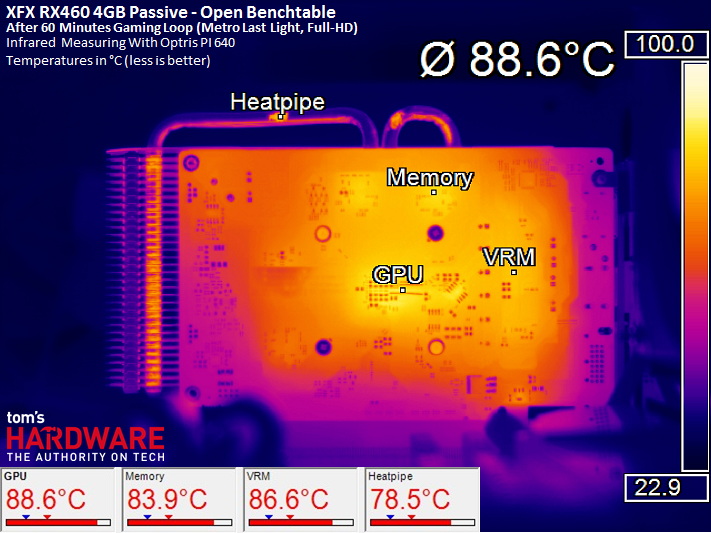 |
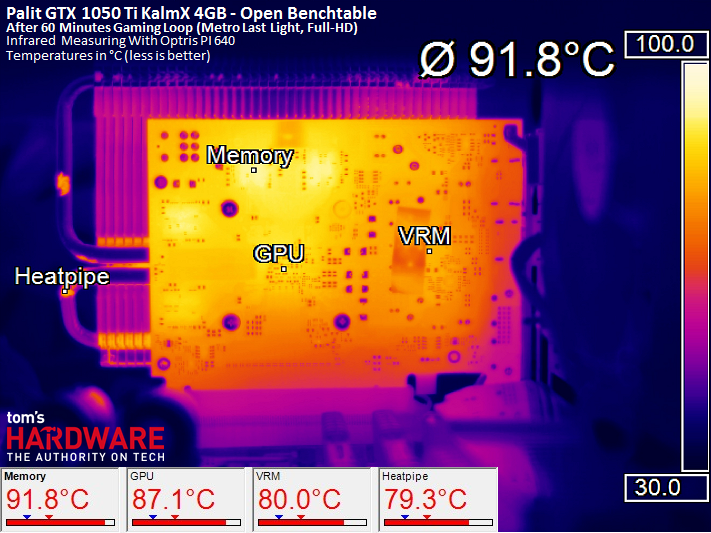 |
Closed housing (overpressure, 1 fan)
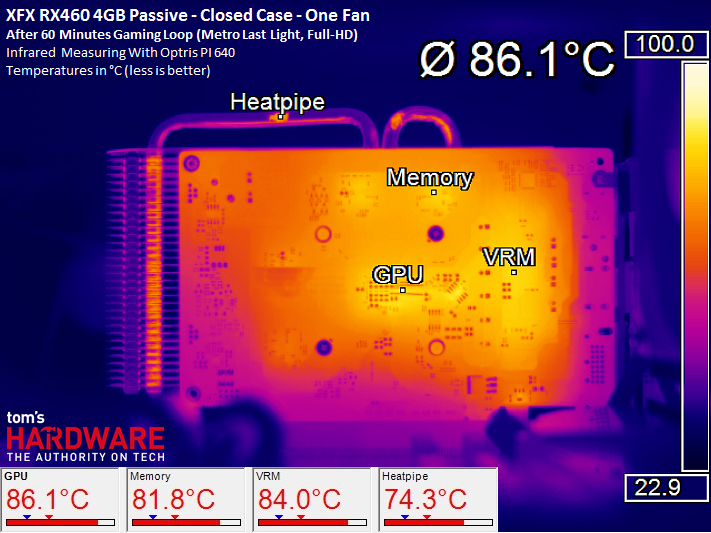 |
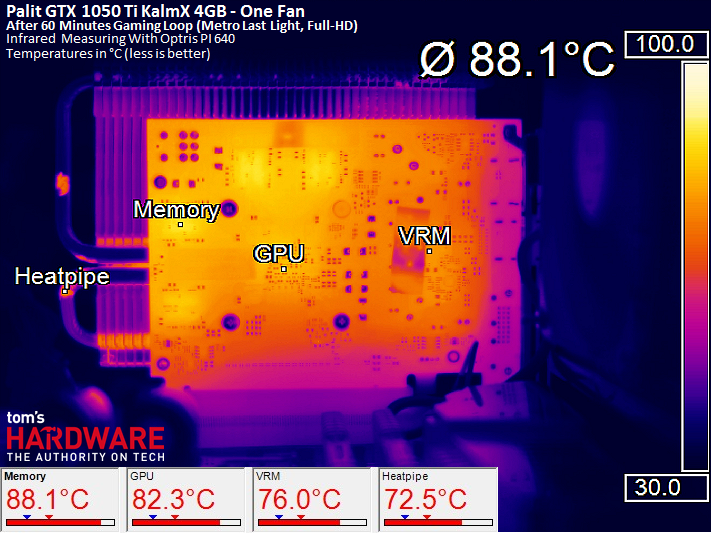 |
Closed housing (vacuum, 2 fans)
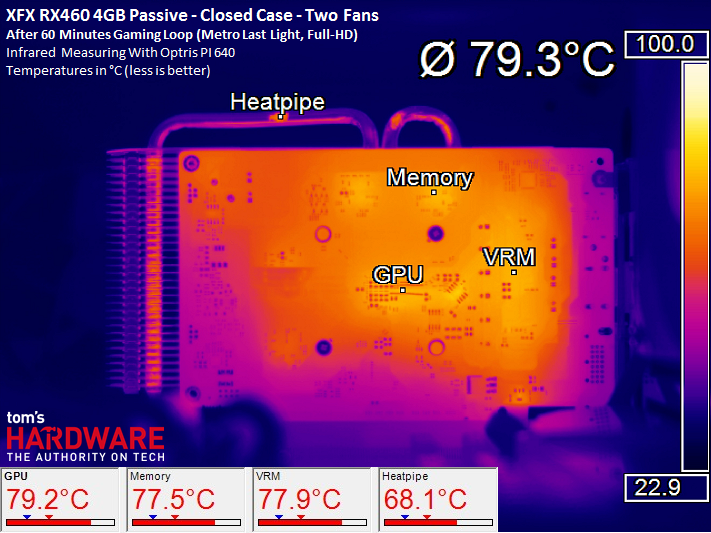 |
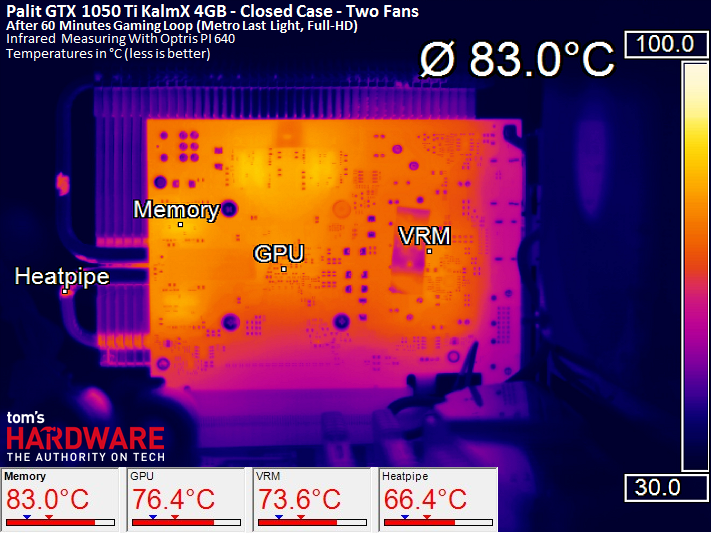 |
The measurements show very clearly that the heating of the components, which cannot be read by sensors, climbs in places into areas that one does not want to expect the hardware in the long term due to the respective manufacturer specifications. Palit would be well advised to clock the memory a little lower and thus lower the voltages a bit – or to switch to Samsung modules that act cooler. However, Nvidia is also likely to be on board, selling GPU and memory in bundles to manufacturers.
3. In fact, clock rates reached
And now it gets exciting, because high temperatures always have a negative effect on the actual achievable clock rates. We always let the cards run in the loop for one hour at a time, until we then determined the average clock rates over several minutes. You really have to make these measurements over a longer period of time, because only after about 30 minutes (or even later) the real performance gap becomes apparent.
While the passively cooled RX460 shows only slight differences in the clock in the final result, it always remains (in places clearly) below the actual base clock – no trace of Boost at all. Not even two fans help to reach at least the 1090 MHz constantly. The far too small cooling surface takes revenge here with all clarity.
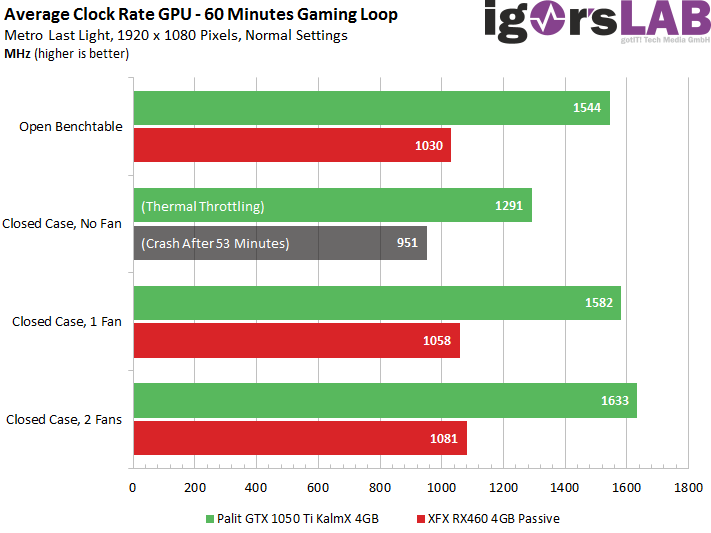
Palit's GeForce can make a much better figure for two reasons. On the one hand, the Küher, with its metal that is well over 100 grams more spent on the cooler, is a completely different calibre – and Nvidia's Boost also works much more delicately. Only fanless in the cage, the Pascal chip swells a bit, but even blossoms in the open benchtable, only to find back to old virtues with some air support.
In the profit and loss account, the Palit GTX 1050 Ti loses very little, while the already slower XFX RX460 Passive Heatsink Edition doesn't get the butt up. Here a much better cooler could certainly have pulled out a lot, because the chip is not really as bad as it is now.
I can only advise manufacturers to test such cards themselves under real conditions and to do without motherboard boxes and cable ties in the R&D department. Install, test and understand why such concepts go wrong.
4th. Gaming Performance
I have selected two more recent games that exemplify where both cards are in a heated state. "Sniper Elite 4" is still easy to play on "Medium" even with the hot cards, although the advantage of the GeForce GTX 1050 Ti is not as extreme as the 40 Euro extra price would suggest. Here DirectX 12 and the activated "Async" function of the small Polaris-11-GPU help quite strongly on the jumps.
Rather "common" DirectX-11 titles, on the other hand, show that the GeForce GTX 1050 Ti is then quite a bit faster, albeit with the same power consumption and waste heat. The larger cycle fluctuations are again more important, as Boost reacts much more sensitively to heat.
But what we can take with us is that the better cooling always brings with it the better performance – and vice versa.















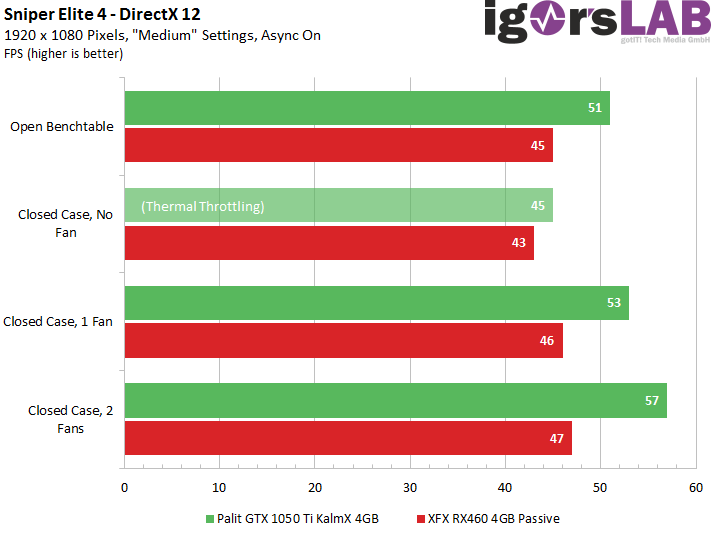
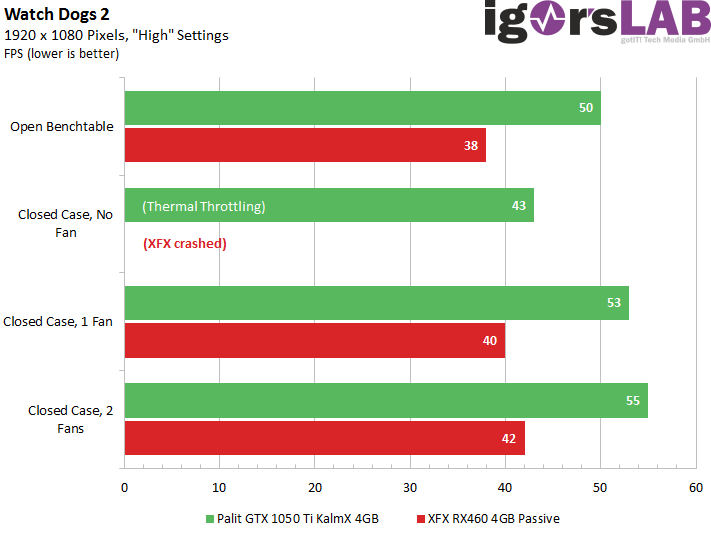



















Kommentieren